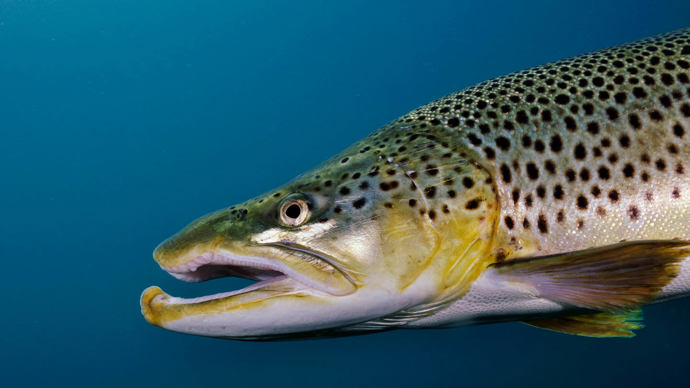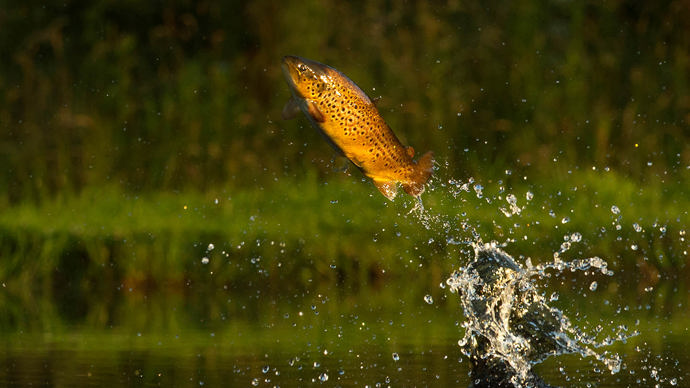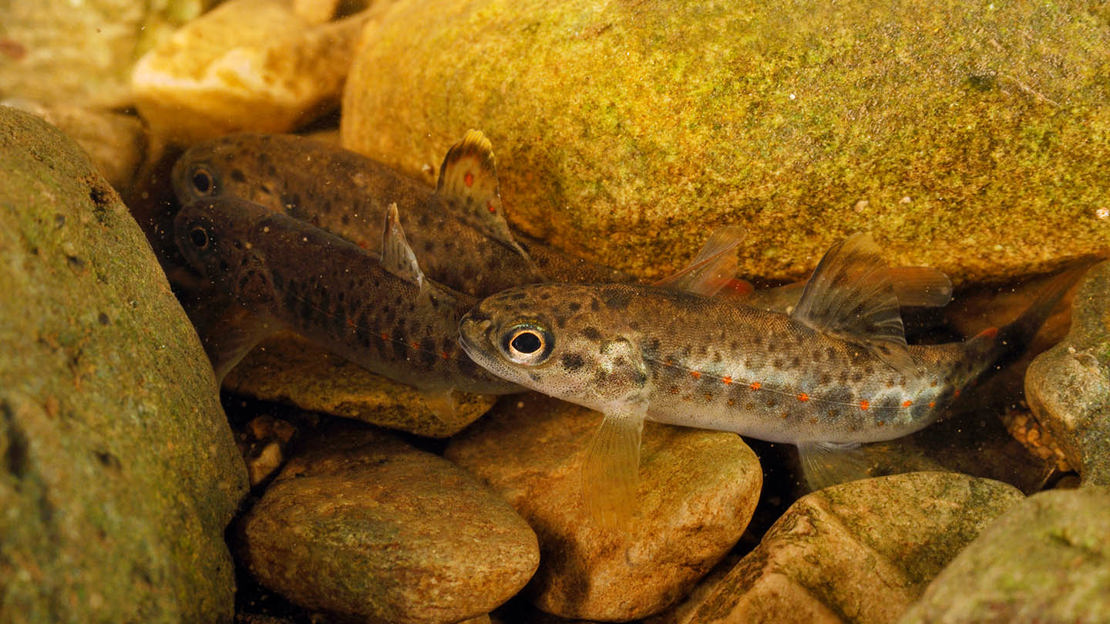Common names: brown trout, sea trout
Scientific name: Salmo trutta
Family: Salmonidae
Habitat: lakes, rivers, streams and salt water
Diet: small fish, insect larvae, crustaceans, flying insects
Predators: mink, otter, cormorants, pike
Origin: native
A powerful predator and an iconic British fish, the brown trout is a common sight in streams and rivers throughout the UK.
Common names: brown trout, sea trout
Scientific name: Salmo trutta
Family: Salmonidae
Habitat: lakes, rivers, streams and salt water
Diet: small fish, insect larvae, crustaceans, flying insects
Predators: mink, otter, cormorants, pike
Origin: native
The brown trout is, as the name suggests, brown in colour. It varies from light silvery brown to the more common golden brown hue, and has darker spots on its back and sides, with a pale belly.
It is medium to large in size, measuring in at around 40-80cm and weighing up to 15kg.

Credit: Linda Pitkin / naturepl.com
These fish are keen predators, enjoying a diet of land and water invertebrates and larvae, crustaceans and small fish. Larger trout will sometimes even eat small swimming mammals, like voles and mice.
Brown trout can live for up to 20 years.
The spawning season for brown trout occurs at the beginning of the year, from January to March. Females will make an impression on the gravelly river bed, which will form the nest. Once the nest is built, the male trout will defend it until the female is ready to lay the eggs. The male will then fertilise the eggs as they are being laid, before they are buried in gravel.
The young, known as ‘fry’, then hatch, and for the first month they lack any scales. They feed on the yolk sac to begin with, until they are ready to feed on invertebrates.

Credit: Andy Rouse / naturepl.com
The brown trout is a widespread species found throughout the UK. It lives in streams, rivers, lakes and salt water habitats. Brown trout and sea trout are actually the same species. Brown trout spend all of their time in freshwater habitats, while sea trout live in the sea. Sea trout migrate to fresh water to spawn.
Keep an eye out for brown trout in rivers and streams – if you’re lucky you might spot one jumping out of the water in search of insects.

The brown trout is not believed to be endangered, however it is threatened by overfishing, habitat loss and climate change. Climate change in particular is a big issue for this species, as it relies on coldwater habitats to survive.
A trout can see out of both corners of each eye simultaneously – meaning it can see in almost every direction at once.